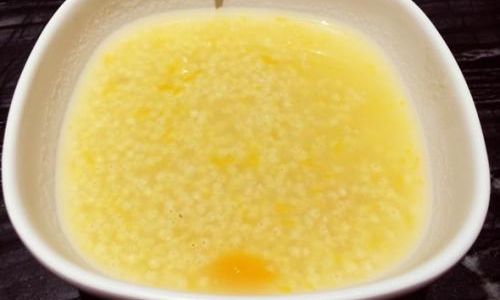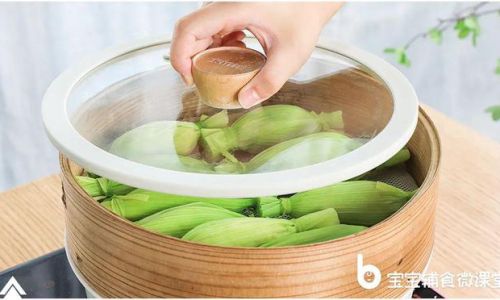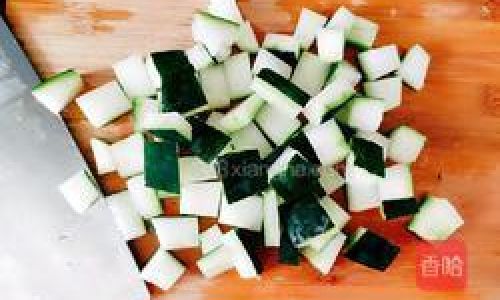Pumpkin porridge, a comforting and nutritious dish enjoyed across cultures, is a testament to the simplicity and depth of home-cooked meals. Often overlooked in favor of more elaborate recipes, this humble dish combines earthy sweetness with creamy texture, making it a favorite for breakfast, dinner, or even dessert. Yet, for many home cooks, the key to achieving the ideal consistency lies in one critical question: How long should you cook pumpkin porridge? This article delves into the nuances of cooking time, exploring factors that influence the process and offering tips to ensure your porridge emerges velvety, fragrant, and perfectly cooked every time.
Understanding the Basics of Pumpkin Porridge
Before diving into cooking times, it’s essential to grasp the fundamentals of this dish. Pumpkin porridge, also known as pumpkin congee in some Asian cuisines, typically consists of rice (or other grains) simmered with pumpkin puree or cubes until the mixture thickens into a porridge-like consistency. The result is a warm, golden bowl of goodness that balances natural sweetness with subtle starchiness.
The primary ingredients are straightforward: pumpkin (preferably varieties like butternut squash, kabocha, or sugar pumpkin for their creamy flesh), rice (short-grain rice like sushi rice or arborio works best for creaminess), water or broth, and optional seasonings like cinnamon, ginger, or a pinch of salt. Some recipes also incorporate coconut milk, honey, or nuts for added richness.
The Cooking Process: A Step-by-Step Breakdown
Cooking pumpkin porridge involves two stages: preparing the pumpkin and simmering the mixture. Let’s break down each step:

-
Prepping the Pumpkin:
- Peel and cube: Remove the skin and seeds, then cut the pumpkin into small, uniform cubes (about 1-inch pieces). Smaller cubes cook faster and blend more seamlessly into the porridge.
- Roast or boil: Some recipes call for roasting the pumpkin first to deepen its flavor, while others opt for boiling to speed up the process. Roasting adds caramelized notes but requires 25–30 minutes in a preheated oven. Boiling cubes in a pot of water takes 10–15 minutes until tender.
-
Cooking the Rice:
- Rinse the rice under cold water to remove excess starch, which helps prevent clumping.
- Combine the rice with water or broth in a pot. The ratio of liquid to rice typically ranges from 4:1 to 6:1, depending on desired thickness.
-
Simmering the Mixture:
- Add the cooked pumpkin to the pot and bring the mixture to a gentle simmer.
- Stir occasionally to prevent sticking, especially as the porridge thickens.
The Million-Dollar Question: How Long to Cook?
The cooking time for pumpkin porridge varies widely based on several factors:
-
Type of Pumpkin:
- Harder varieties (e.g., kabocha) require longer cooking to soften fully—up to 30–40 minutes after simmering.
- Softer varieties (e.g., butternut squash) may need only 20–25 minutes.
-
Rice Variety:
- Short-grain rice (e.g., sushi rice) absorbs liquid quickly and breaks down into a creamier texture, often ready in 25–30 minutes.
- Long-grain rice (e.g., basmati) retains more structure and may take 35–40 minutes to soften.
-
Heat Source:
- Gas stoves provide instant heat adjustment, allowing precise control over simmering.
- Electric stoves retain heat longer, so reducing the flame to low early in cooking prevents scorching.
-
Desired Consistency:

- Thin porridge (like soup) cooks in 20–25 minutes.
- Thick porridge (spoon-coating) needs 35–45 minutes, with occasional stirring to avoid lumps.
Signs Your Porridge Is Ready
- Texture Test: The porridge should glide off a spoon without being watery. If it clings in thick ribbons, it’s done.
- Pumpkin Softness: Cubes should mash easily against the side of the pot with a spoon.
- Rice Bloom: Grains will swell and lose their opacity, becoming translucent and plump.
Pro Tips for Perfect Porridge
-
Soak the Rice:
Soaking rice for 30 minutes before cooking reduces stovetop time by 5–10 minutes and ensures even cooking.
-
Use a Heavy-Bottomed Pot:
Thick pots distribute heat evenly, minimizing hotspots that could burn the porridge.
-
Stir Wisely:
Frequent stirring breaks down starches for creaminess but avoid overdoing it—excessive stirring can make the porridge gluey.
-
Adjust Seasonings Last:
Salt, spices, or sweeteners added too early can toughen the pumpkin. Stir them in during the final 5 minutes of cooking.

Common Mistakes to Avoid
-
Rushing the Process:
Cooking on high heat to “speed things up” often results in unevenly cooked rice or burnt pumpkin. Maintain a gentle simmer.
-
Ignoring the Liquid Ratio:
Too little liquid = dry, stiff porridge. Too much = watery soup. Start with the recommended ratio and adjust gradually.
-
Using Underripe Pumpkin:
Immature pumpkins lack sweetness and take longer to soften. Choose ones with deep color and firm flesh.
Variations to Experiment With
-
Spiced Pumpkin Porridge:
Add a cinnamon stick, star anise, or grated ginger during simmering for aromatic warmth.

-
Dairy-Free Creaminess:
Swap water for coconut milk or almond milk and finish with a drizzle of maple syrup.
-
Savory Twist:
Omit sweeteners and stir in miso paste, soft-boiled eggs, or sautéed greens for a hearty meal.
Cultural Significance of Pumpkin Porridge
In many Asian cultures, pumpkin porridge is more than just a meal—it’s a symbol of comfort and tradition. During autumn festivals or family gatherings, bowls of steaming porridge are served to symbolize abundance and togetherness. The dish’s gentle sweetness also makes it a popular weaning food for infants, highlighting its versatility across life stages.
The Science Behind Starch Gelatinization
Understanding the science of starch can demystify cooking times. Rice contains two starch molecules: amylose and amylopectin. As the porridge simmers, heat breaks down these starches, causing the rice to swell and the liquid to thicken. Longer cooking allows more starch molecules to leach into the broth, creating that coveted creamy texture. However, overcooking risks breaking down amylopectin entirely, leading to a gluey mess.
Troubleshooting Guide
-
Porridge Too Thin:
- Simmer uncovered for 5–10 minutes to evaporate excess liquid.
- Whisk in a teaspoon of cornstarch mixed with cold water for instant thickening.
-
Porridge Too Thick:

Gradually stir in hot water or broth (1–2 tablespoons at a time) until desired consistency is reached.
-
Burnt Bottom:
Transfer the unburnt porridge to a new pot immediately. Scrape gently to avoid mixing in burnt bits.
Leftovers and Storage
Pumpkin porridge stores beautifully! Let it cool completely, then transfer to airtight containers. Refrigerate for up to 3 days or freeze for 2 months. To reheat, add a splash of water and warm gently on the stove, stirring occasionally.
Conclusion: Patience Is a Virtue
In a world obsessed with instant gratification, pumpkin porridge teaches us the value of slowing down. While its cooking time may seem lengthy, each minute contributes to a dish that nourishes both body and soul. Whether you’re a novice cook or a seasoned chef, mastering the art of simmering pumpkin porridge is a rewarding journey—one that begins with a pot, a spoon, and the wisdom to let time work its magic.
So, the next time you ask, “How long should I cook this?” remember: the best porridge isn’t rushed. It’s crafted with care, patience, and a deep appreciation for the alchemy of simple ingredients transformed by time.





0 comments